Audi is advancing into a new dimension in automotive lighting technology. Originally, vehicle lighting in road traffic primarily served the safety of all road users. The digitization of headlights and rear lights opens up unprecedented perspectives: light becomes the medium of external communication and interaction, personalizes the design and opens up new possibilities for design and customization for the customer.
New dimensions in lighting technology!
Light has made a real technological leap: The development from halogen light to xenon headlights to LED technology in cars took less than two decades. These milestones in new technologies brought tangible added value to customers. The Audi light no longer only ensured better and better visibility, it also shaped the face of the models in every era and added a communicative and aesthetic dimension to everyday use.
Illumination and energy efficiency are improved
With the change in light sources, illumination and energy efficiency have improved in equal measure. Digitization is now causing a further boost in innovation and bringing completely new design options: light is becoming intelligent. The car interacts with its environment with the help of light signals. As early as 2003, the then A8 offered adaptive light with automatic dynamic headlight range control, before a camera on the windshield recognized other road users in 2010. Two years later, the brand underpinned its innovative strength and pioneering role in the R8: The introduction of the dynamic turn signal, with which the indicated change of direction can be recognized from the corner of the eye, represented a considerable gain in safety - until today. After the premiere in the R8 LMX, Audi presented the LED headlights in HD matrix technology with the laser as additional high beam in the luxury A2017 sedan in 8 - a world innovation in large-scale production. The premium manufacturer is now digitizing the Matrix LED headlights and is also expanding the variety. The digital OLED rear lights in the new Q5 opened the door to car-to-x communication this year and for the first time allow new selectable tail light designs for vehicle configuration.
Audi not only illuminates the road intelligently, but also gives its models an unmistakable personality with concise signatures and dynamic lighting scenarios. Customers already receive different light signatures as an option and depending on the model, further differentiations will follow. The dynamic flashing light or the effective staging of the leaving and coming home functions when unlocking and leaving the car give the light an emotional note. In the future, lighting technologies will make driving even safer, the individuality of each model even more visible and external communication even more effective.
From the light bulb to the digital high-tech application: light years of progress with Audi
Halogen light bulbs allowed the first technical improvements, which also had an impact on the appearance of automobiles. With free-form headlights in the 8s and clear covers at the end of the 1994s, the designers were able to shape the face of the Audi models more and more through the light. The second generation xenon headlights in the Audi A2003 from 2008 and the swiveling modules from XNUMX were leaps in development that raised the quality of light and the customer experience to a new level. Audi used the LED light technology introduced in XNUMX to make a real quantum leap. It replaced the previously unsegmented and indivisible lighting units. The efficiency, range and illumination significantly exceeded the values of the previous headlights. In addition to this technical progress, light-emitting diodes allowed much greater freedom in the design of the light source. Light as a design element became much more important. The segmentation as a matrix and the digitization expanded the perspective again. The lights in an Audi are no longer just for lighting. They create a new customer experience by enabling external communication including social interaction as well as a large number of selectable lighting designs for the first time.
Headlight technology: looking ahead
In 2004, Audi used light-emitting diodes in LED headlights in the daytime running lights of the Audi A8. Light-emitting diodes are semiconductors that can convert electrical energy directly into light. They work particularly efficiently: their energy consumption is low and the light output is high. The first full LED headlights followed in the Audi R2008 in 8. Today, all model series - with the exception of the entry-level Audi A1 - have headlights with LED technology as standard. In 2013 Audi was the first automobile manufacturer to receive the European Union certificate for the use of LED technology as an eco-innovation.
Light-emitting diodes are the basis of headlamp technology to this day. While the high beam assistant automatically switches its function on or off by detecting oncoming traffic, the Matrix LED headlights in the 2013 Audi A8 paved the way for new applications. The 25 individual light emitting diodes of the high beam can be switched on or off individually, or alternatively dimmed. Then as now, the lighting system records other road users with high precision using a camera, avoids glare by switching off individual diodes and still illuminates the road brightly. Based on navigation, it reacts to the respective driving situation and distributes the light predictively according to the route data. With intelligent cornering lights, the focus point of the light shifts in the direction of the curve as soon as the steering is turned.
The laser as additional high beam, which appeared for the first time in 2014 in the limited edition Audi R8 LMX, doubled the range. The A8 bundled the latest ideas in 2017: rear lights with OLED technology and HD Matrix LED headlights with the Audi laser as additional high beam embodied the benchmark in the competition. For this purpose, each headlight integrates 16 small, individually controllable light-emitting diodes twice and thus generates a multi-line matrix LED high beam. The system displays cornering, city and motorway lights with the highest precision and complements the high beam by even more precisely fading out other road users. The laser is active from 70 km / h and shines as a spot for around 600 meters.
The digital matrix LED headlight with digital micromirror device (DMD) premiered in the Audi e-tron, the brand's first fully electric model. Audi achieved another world innovation in large-scale production for headlights and high beam, as the DMD technology known from video projectors was installed in an automobile for the first time. At its heart is a small chip that integrates 2019 million micromirrors with an edge length of only a few hundredths of a millimeter each. With the help of electrostatic fields, each one of them can be tilted up to 1,3 times per second. Depending on the position, the light from three high-performance LEDs reaches the DMD chip via specially calculated lenses and a free-form reflector. From there, the light either reaches the street via lenses or an absorber that blocks it. This is accompanied by three innovations with a high level of customer benefit. This technology can project a kind of “carpet of light” in front of the vehicle, in addition to the well-known but even more precisely representable functions on expressways - that is, on motorways in Germany. This so-called lane light brightly illuminates your own lane, expands dynamically when you change lanes and thus increases traffic safety. Innovation number two: The orientation light makes it easier to keep in lane, especially in tight spaces, by showing the position in your own lane as a delimitation strip. The third innovation: the marking light is used in conjunction with the optional night vision assistant. It recognizes pedestrians near the road and indicates them to the driver with a precise light cone.
Rear light technology: Development of signal functions for the display
Similar to the headlights, the tail lights at Audi have also developed rapidly. In 2011, LEDs gave the rear lights of the Audi A6 a new visual homogeneity and increased the efficiency of the lighting technology. The rest of the traffic also benefits: The LED brake light responds without delay and is two tenths of a second faster than a light bulb. This allows the driver behind to react earlier. Correspondingly, at 100 km / h the distance on which a following car can brake increases by almost six meters. In 2012 the flashing light with dynamic display found its way into the Audi R8. This pioneering achievement, in which Audi worked closely with the registration authorities, became the standard. Particularly at a distance and at night, changes in direction can be seen even more clearly by the movement of the flashing light for following traffic.
A new era began in 2016 with the OLED rear lights in the Audi TT RS. The light from the LEDs, which are made of organic material, is extremely homogeneous and precise. OLED light sources are ultra-thin surface light sources and do not require reflectors. This technique is efficient, light and visually impressive. In 2020, Audi was the first manufacturer to digitize the rear lights, turning them into a display that opens up new perspectives in terms of design, personalization and security. Due to the increased segmentation of the digital OLEDs to 18 segments per light, different tail light designs can be realized for the first time. When purchasing the Q5, customers can choose between three tail light signatures. Regardless of this, a particularly sporty signature can be set in “dynamic” mode in Audi drive select. In addition, proximity detection offers increased safety in road traffic: if the Q5 is stationary and another road user approaches from behind within less than two meters, all OLED segments are activated. Thus, the visible area is enlarged and the perceptibility increased. A total of five different appearances can be created with a single piece of hardware.
Experience for the senses: design, signature and dynamism
On or off - these were the lighting options for parking, low beam and high beam in the analog age. Functions beyond pure seeing and being seen hardly existed. The design was subject to tight limits until the XNUMXs. Smaller light sources paved the way for ever more individual and concise designs. Halogen light bulbs made free-form headlights possible. The clear cover panes from the late XNUMXs and the small xenon lights gave the Audi headlights a pupil-like appearance. They allowed more compact headlight shapes and component arrangements. For the first time, an option business and thus a differentiation opportunity arose in the lighting sector, which underpins the premium character of the brand in line with technical progress.
The segmentation and modularization creates creative freedom in vehicle design and encourages new creativity in the design and animation of light. In combination with digitization, new functionalities such as light signatures and dynamic lighting scenarios were created. Typical for Audi: All light signatures are drawn absolutely precisely and homogeneously. They emphasize the width of the vehicle with striking horizontal lines and accents on the outside. Together, these segments form a body. This ensures that the vehicle looks wider and is therefore well positioned on the road.
Design innovations and customer experience always go hand in hand with maximum functionality and high customer benefit. In 2004, the LED daytime running lights formed the face of Audi for the first time and improved visibility. Today, model and line-specific signatures in the daytime running lights can be displayed in the A3 as the first series of Matrix LED headlights with just one hardware.
The dynamic lighting for the leaving and coming home functions in the Audi A7 Sportback and A8 created a new customer experience. This function is activated when unlocking and leaving the car. The digital matrix LED headlights with DMD technology for the Audi e-tron meanwhile offer five different greeting scenarios with the expanded dynamic light scenarios. They can appear as projections on the wall or the floor. With this diversity and innovative strength, Audi is and will not only be the world's leading brand in automotive lighting technology, but also makes this advance through technology visible in the design of the light signatures and their dynamic presentation.
Versatile and future-oriented: security, communication and interaction
At Audi, light stands for a symbiosis of technology, design, safety and customer experience. The networking ensures intelligence. Luminaires are turned into displays, and a one-dimensional signal and warning function of yore will result in versatile communication with the outside world in the future.
Whether at the front or at the rear: Thanks to freely selectable digital signatures with standardized hardware, a wealth of variants has already found its way into the series. In the future, it is conceivable that owners can switch between a large number of signatures via the MMI or implement individual designs. Audi e-tron customers already have the option of booking additional light functions via the myAudi app after purchasing the vehicle - at any time and with great flexibility. Other models will follow. The digital matrix LED headlight with DMD technology already offers projections for targeted lane guidance and orientation, which serve to relieve the driver and avoid accidents. Thinking into the future, this technology can use additional ideas to improve the driver's attention and the mutual consideration of road users.
With proximity detection in the Audi Q5, car-to-X communication between the rear lights has also been a reality since 2020. Audi is thus placing the focus on people and paving the way into a new age with the digital OLED rear lights. The taillights develop into a display medium. And this can be expanded with versatile functions in the next stage of development. In the medium term, the digital OLED will have more than 60 segments, each of which can be individually controlled and activated in a targeted manner. In addition to the versatile design and personalization of lighting designs, the digital OLED can, for example, alert other road users early on to local dangers such as slippery roads or the end of a traffic jam.
Looking even further into the future, Audi is working on the flexible digital OLED. Instead of the approx. 0,7 millimeter thin but rigid carrier material, flexible substrates such as thin glass, plastic or metal foils can be used, which can be bent in one or more directions. This new option allows greater creative freedom in the tail light designs. The core properties of the technology are retained, as is the low weight of the previously two-dimensional OLED displays. For the first time, the light generated can shine in three dimensions. Flexible digital OLEDs facilitate the integration of the "display area" right into the vehicle flanks. This will visibly increase the usable area for personalizing the lighting design and for communicating with the environment in the future.
The light development at Audi
- 1994 Second generation xenon headlights in the Audi A8
- 2003 Audi adaptive light with automatic dynamic headlight range control in the Audi A8
- 2004 LED daytime running lights in the Audi A8 W12
- 2007 “Pearl necklace” daytime running lights as a strip of lights in the Audi A4
- 2008 Full-LED headlights in the Audi R8, range now spanning all model series
- 2010 LED headlights with adaptive light in the Audi A8; Networking the headlights with the
Navigation data - 2011 Visually homogeneous LED rear lights in the Audi A6
- 2012 Flashing light with dynamic display in the Audi R8
- 2013 Full LED headlights for the compact class in the Audi A3
EU confirms Audi as the first manufacturer of LED technology as an eco-innovation
Audi Matrix LED headlights with adaptive high beam in the Audi A8 - 2014 Laser as additional high beam in the Audi R8 LMX
- 2015 Opening of the light assistance center with a 120 meter long light channel
- 2016 OLED rear lights in the Audi TT RS
- 2017 HD Matrix LED headlights including laser as additional high beam in the Audi A8
Dynamic lighting: leaving and coming home functions in the Audi A8 - 2019 Digital Matrix LED headlights (DML) in the Audi e-tron and e-tron Sportback
- 2020 Digital daytime running light signatures in the Audi A3
Digital OLED technology in the Audi Q5
Lighting technology terms
Halogen headlights
Halogen headlights have incandescent lamps as a light source, the light of which is usually bundled in a reflector coated with aluminum. Halogen lamps consist of a thin tungsten filament that is located in an airtight glass bulb filled with halogen gas. When voltage is applied, current flows. Due to its ohmic resistance, the wire heats up and emits light with approx. 2.700 Kelvin. The noble gas halogen protects this filament against oxidation and enables more light output. Because the glass bulb can withstand extremely high temperatures, halogen lamps achieve very high light outputs.
Xenon headlights
Xenon headlights are gas discharge lamps. In a quartz glass bulb filled with xenon gas, a concentrated arc burns between two tungsten electrodes. With a color temperature of around 4.200 Kelvin, it provides a much brighter light and thus better illumination of the road than halogen headlights with incandescent lamps. The energy consumption of xenon headlights is around 20 percent lower, and their service life is significantly longer than that of the previously common lamps with their filament.
LED headlights
LEDs (light emitting diodes) are luminescent lamps. The light is generated by supplying electrical energy without mechanics in the semiconductor crystal. With the development of the blue light emitting diode in 1993 it was possible to realize all light colors. A small applied phosphor plate converts part of the blue light into yellow light, so that the overall color is white. This made it possible to use it in headlights. Compared to xenon headlights, LED headlights offer greater visibility, high efficiency and advantages in terms of safety and comfort. Their color temperature of 5.500 Kelvin is similar to daylight. That is why the eyes hardly tire, which helps the driver in the dark and in bad weather. In fog and precipitation, LED headlights reduce self-glare. The low beam uses only around 2 times 20 watts per unit, considerably less than conventional halogen light. The forward voltage of a white LED in the headlight is usually between 3,0 and 3,5 volts. There may be deviations depending on the LED type. The light-emitting diodes are maintenance-free and designed for the life of the car.
Matrix LED headlights
The Matrix LED headlights generate the high beam with small light-emitting diodes that, depending on the model, are bundled in common reflectors or lenses. They always illuminate the road optimally and without glare. As soon as the camera on the windshield detects other vehicles or localities, the control unit partially switches off individual LEDs or dims them in many stages. This means that several million light distributions are possible. The Matrix LED light hides other vehicles, but fully illuminates the areas between and next to them. Additional light-emitting diodes of the Matrix LED headlights take on the function of the maneuvering light, which illuminates the area in front of the car when reversing, as well as the function of the all-weather light. The latter reduces self-dazzling in poor visibility conditions and offers wider illumination than fog lights with four times the range. The dynamic cornering light is created by moving the center of gravity in the direction of the curve. The turning light is predictively activated shortly before reaching the intersection. In addition, the Matrix LED headlights have dynamic flashing lights as well as dynamic light scenarios when unlocking and leaving the vehicle.
HD Matrix LED headlights
In the A8, Audi further developed the Matrix LED headlights into the HD Matrix LED headlights in 2017. Here, each headlight integrates two 16 small, individually controllable light-emitting diodes for multi-line control of the high beam. They sit in two rows in a common housing. Thanks to this new arrangement and thanks to the low beam, which can also be controlled variably, the HD Matrix LED headlights illuminate the road even more precisely and better adapted to the situation.
Audi laser light
The Audi laser light refers to the additional high beam that works together with the HD Matrix LED headlights. This laser doubles the range of the high beam. A small laser module in each headlight creates a cone of light that shines as a spot for around 600 meters. The driver can recognize contrasts better and tire less quickly. From a speed of 70 km / h, the laser switches on and offers more visibility and safety. If a camera detects other road users behind the windshield, the laser automatically dips the light.
Digital matrix LED headlights with DMD technology
The digital matrix LED headlight can display the cornering, city and motorway lights as forms of the low beam with the highest precision. It supplements the high beam with an even more precise masking of other road users. DMD stands for Digital Micromirror Device, a chip made from 1,3 million micromirrors that makes projections from the headlight possible. It breaks down the light into tiny pixels and enables novel functions such as the track light, the orientation light and the marker light. These innovations support the driver and increase road safety.
Rear lights
OLED rear lights
OLEDs are organic light emitting diodes that are less than a millimeter thick. Their name comes from the organic semiconductor material from which they are made. A low electrical voltage of 3 to 4 volts is enough to make the thin layers glow. In contrast to point light sources such as LEDs, OLEDs are surface emitters. As a result, the light is more homogeneous than ever and can be divided into individually dimmable segments. It does not require any optics such as reflectors or light guides and makes OLED units efficient and light. The OLED rear lights made their debut in the Audi TT RS 2016 with a total of 12 segments per light. There were already 8 segments in the 2017 Audi A16.
Digital OLED rear lights
Audi has been offering digital OLED rear lights in the Q2020 since 5 and for the first time enables customers to choose from different tail light designs with just one single piece of hardware. In contrast to the OLED rear lights in the TT RS, where each light function is supplied via its own line, the digital OLED rear lights are connected to the on-board power supply control unit via a bus system. Therefore, significantly more functions are possible. The technology has a larger number of individually controllable segments than the OLED rear lights that appeared in 2016. Three panels are used in a rear light of the Audi Q5, each integrating six OLED segments. These can now be activated as required and their brightness can be continuously adjusted. Communication is created in addition to classic signal functions: In the Q5, Audi integrated proximity detection for the following traffic for the first time.
In the future, the digital OLED with more than 60 segments will have an approx. Tenfold number of individually controllable areas. This is made possible by the increased performance of future vehicle electronics and the specially developed OLED hardware. In addition to the personalization of light designs, the digital OLED can be used as a display element in the rear lighting and thus for car-to-x communication. With the permission of the licensing authorities, for example, following road users could be made aware of local dangers such as icy roads or the end of a traffic jam at an early stage. Thanks to high precision, extremely high contrast and great variability, the rear lights gradually develop into a display.
Future technology: flexible digital OLED rear lights
While digital OLED rear lights can only be integrated two-dimensionally into the light source, new bendable substrates allow for the first time a curvature in flexible digital OLED rear lights. This new design freedom creates a three-dimensional light design that blends in even better with the body shape. This will visibly increase the usable area for personalizing the lighting design and for communicating with the environment in the future. The core properties of the technology, perfect homogeneity and high contrast, are retained - even from different angles.
Between artistic freedom and authorities: a conversation between lighting developers and designers
Stephan Berlitz (Head of Light Development) and César Muntada (Head of Light Design) work closely together on the development and design of lighting systems. Their exchange shows how design and functionality go hand in hand at Audi.
Mr. Berlitz, Mr. Muntada, strict functionality when it comes to lighting and beautiful design - do they even go together?
Stephan Berlitz: As technicians, we work very closely with the design department right from the preliminary development stage. The questions: What does a new technology bring us functionally but also in terms of design? At Audi, light means first and foremost safety for the driver and passengers, i.e. seeing and being seen. Our highly functional technology, think of the HD Matrix LED headlights with the Audi laser as additional high beam, but can also be presented in an attractive way.
César Muntada: At Audi, lighting technology and lighting design cannot be separated. Light becomes a visible expression of Vorsprung durch Technik. We give the car an unmistakable face and sharpen the character of the model and brand. An Audi must be recognizable at first glance at night, near and far. We therefore use a principle that guarantees recognition, but leaves the necessary space for the character of the respective vehicle. Specifically, Audi creates a holistic lighting experience. It starts with the exterior and continues in the interior with the contoured ambient light, with which the customer can choose an individual color mood upon request.
In addition to technical limits and the budget framework, legislation restricts the possibilities of lighting development, with some considerable differences worldwide. How do you get that under one roof?
Stephan Berlitz: For every technology there are specific requirements in different countries. The worldwide legal regulations prescribe the required minimum areas, light and glare values. The color is regulated by law depending on the function. Audi consciously uses a strong red with a longer wavelength in the tail light in order to generate a high-quality appearance and an even stronger differentiation from the yellow indicators. In general, however, the greater the range of functions and designs, the more complex the approval process, and a country-specific individual assessment must always be made. A good example of the legislature following good ideas is the dynamic flashing light. Audi has convinced the authorities that this idea is an asset for road safety. With this we achieved a world first. Many competitors then took over this role.
Technological advances in hardware, but also digitalization, raise the subject of light to a new level and create fascinating possibilities. What will this change for you?
Stephan Berlitz: The importance of lighting technology is changing fundamentally. Consistent digitalization extends the perspective from driver-centered security to comprehensive external communication and personalization. The use of light is changing: it becomes a means of communication and thus receives a social and emotional component. The light will be able to show the intentions of the driver and vehicle to a greater extent. We already have an intelligent, highly adaptive lighting control system. Projections such as the marker light are an example of the new external communication with other road users. And the digital OLED also shows how we can implement car-to-x communication using light - an idea that can become even more important with automated driving.
Light as a language of communication: How can communication on the street work without words?
César Muntada: People can grasp information particularly quickly with their eyes. That is why we use the intelligent interaction between light and environment in our models. The goal is simple and direct communication that can be understood across cultures and around the world without words. Digitization will make a significant contribution to the fact that we can set light in motion and make this communication even more understandable. One thinks, for example, of the wiping indicator, the movement of which is reminiscent of the waving of a hand. Light is thus becoming a universal language in road traffic - by day and by night.
What future prospects can you tell us today?
Stephan Berlitz: In the next ten years, LED will continue to be the defining lighting technology. There are also two other lighting technologies. On the one hand there is the laser light source, i.e. the further development towards high performance. On the other hand, it is the OLED with its extensive, homogeneous rear lighting that gives us a lot of leeway. We will continue to develop the digital OLED and add new functions. In addition, we are already working on the next generation, the flexible digital OLED.
César Muntada: The flexible digital OLEDs offer us designers new freedoms because they can be bent. With this technology, we can integrate the rear lights even better into the vehicle contour and create three-dimensionality. A combination of simple symbols and dynamic movements is the future perspective of communication between the vehicle and the environment. In addition, we want to offer customers the option of designing the lighting to suit their personal taste - even more so in the future than today.
Of course that had not happened yet!
tuningblog has countless other articles on the subject of car and auto tuning in stock. Do you want to see them all? Just click HERE and look around. In part, we would like to provide you with news but also off the tuning. In our category Tips, products, information & Co We have reviews of car or accessories manufacturers, new ones Tuning Wiki Terms or one or the other Leak veröffentlicht. Following an excerpt of the last articles:
|
Out and about in the Golf with +700 hp every day? Then it's a daily driver! |
New sports steering wheel from tuner Heico Sportiv for Volvo! |
Audi digitization - new dimensions in lighting technology!
"Tuningblog.eu" - we keep you up to date on the subject of car tuning and car styling with our tuning magazine and we present you the latest tuned vehicles from all over the world every day. It's best to subscribe to ours Feed and will automatically be informed as soon as there is something new about this post, and of course also to all other contributions.
 tuningblog.eu Your magazine about tuning the car
tuningblog.eu Your magazine about tuning the car
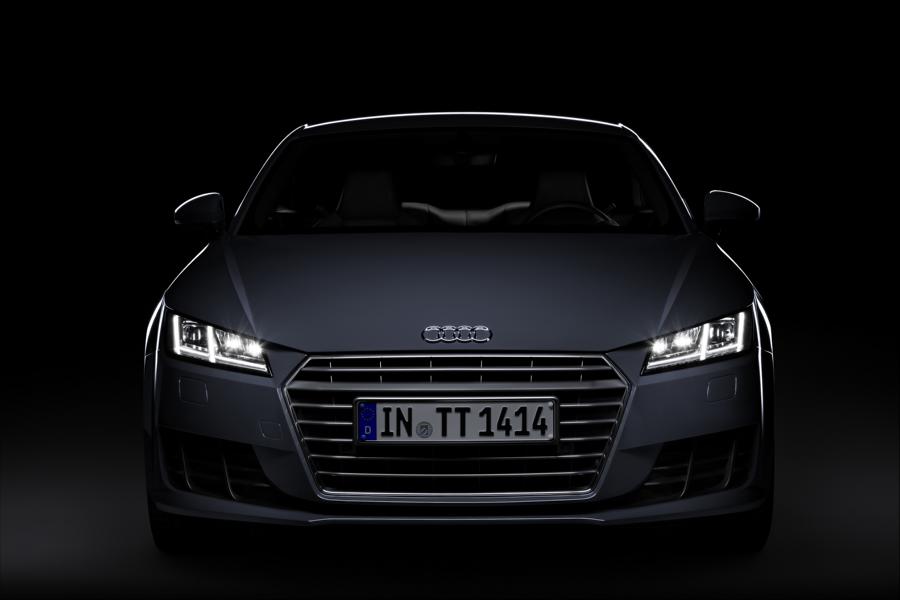
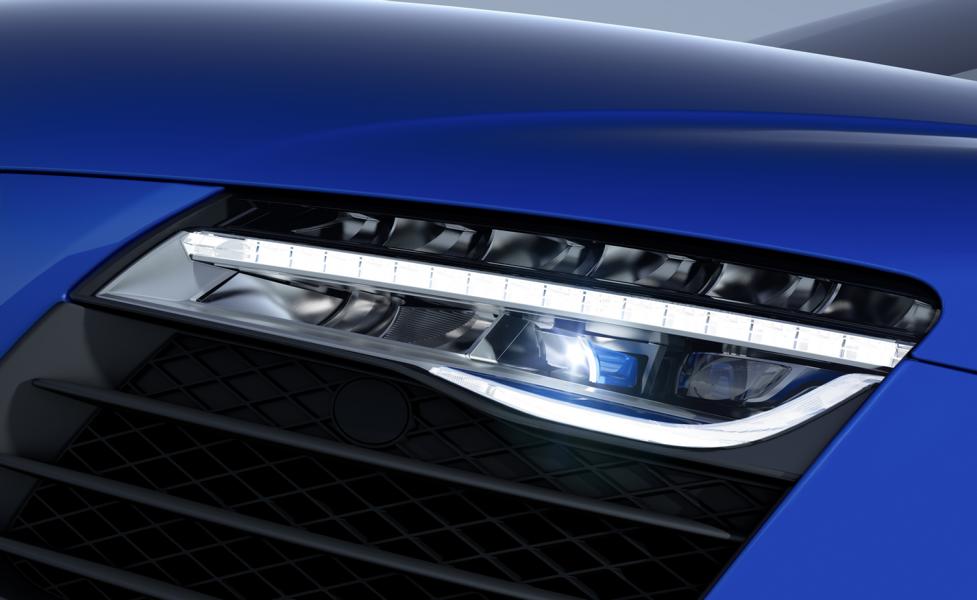
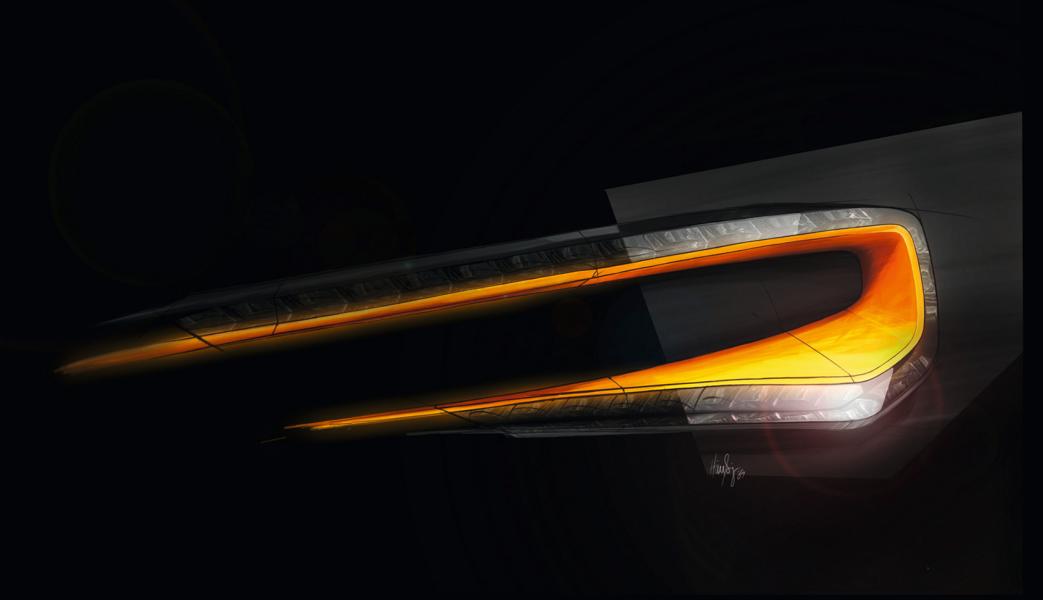
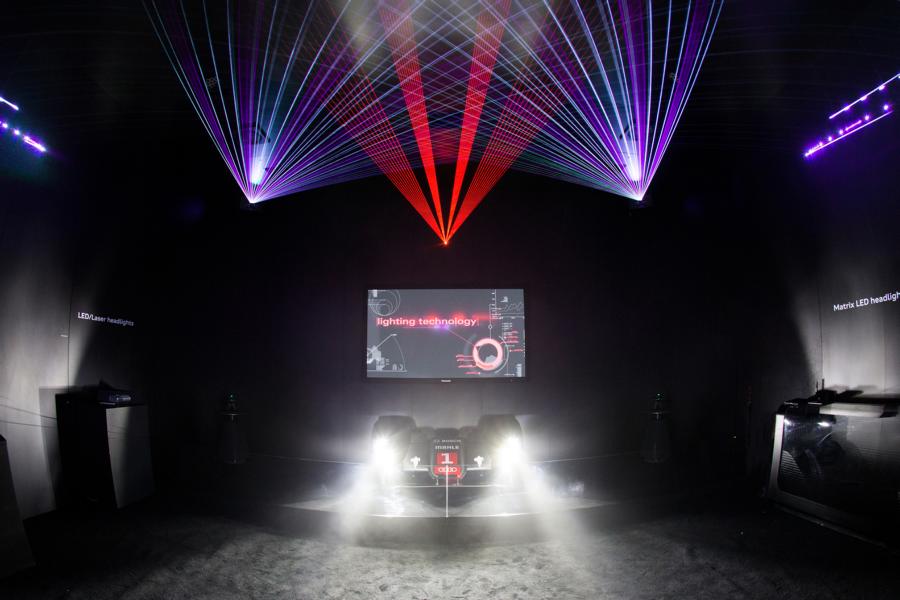
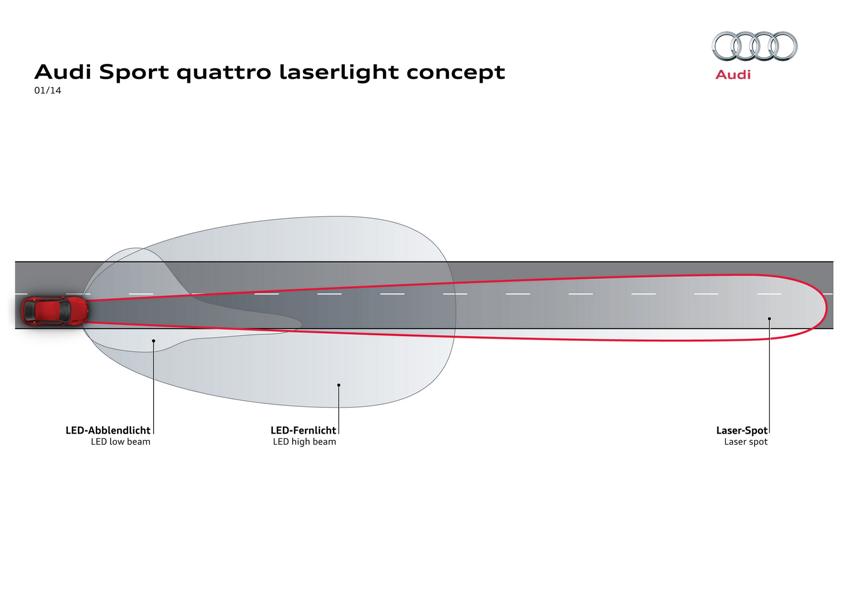
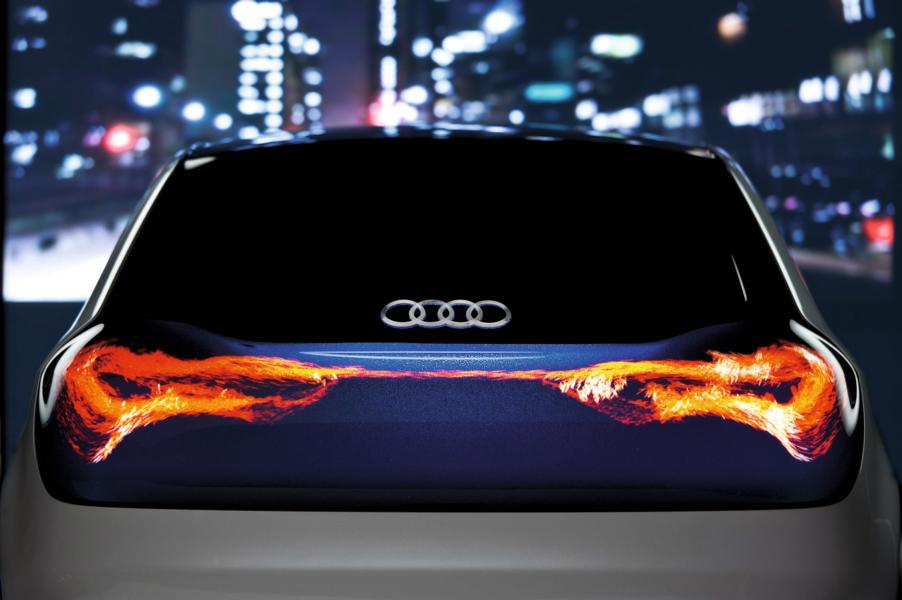
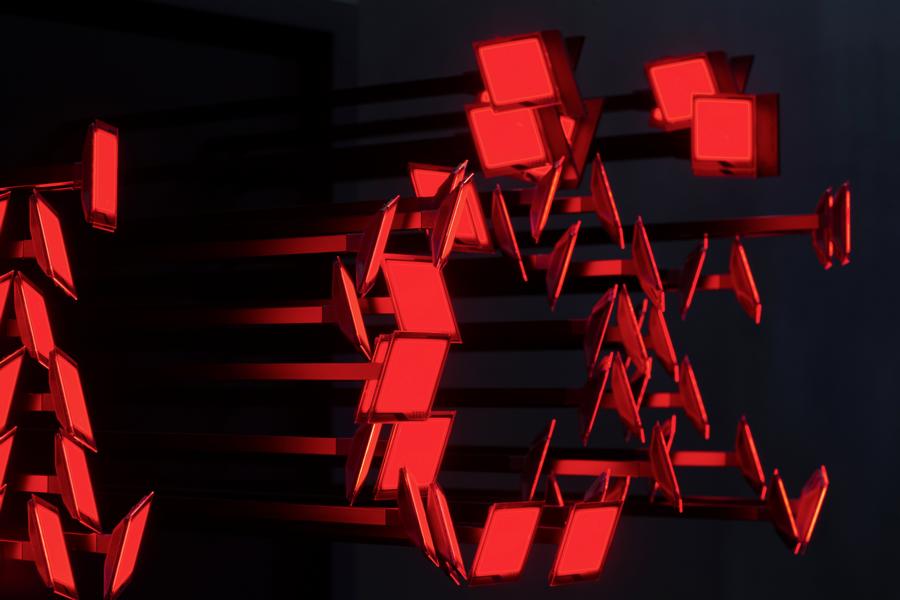
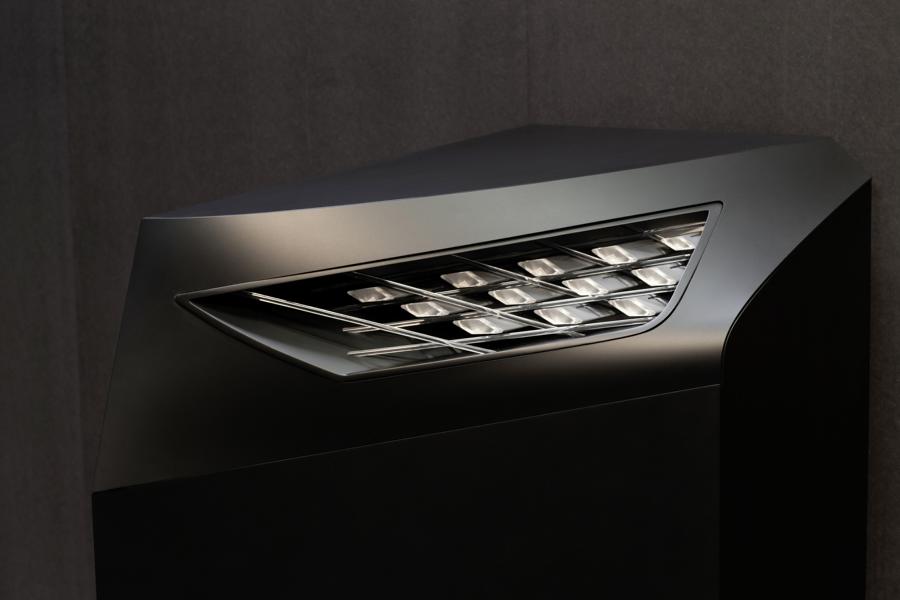
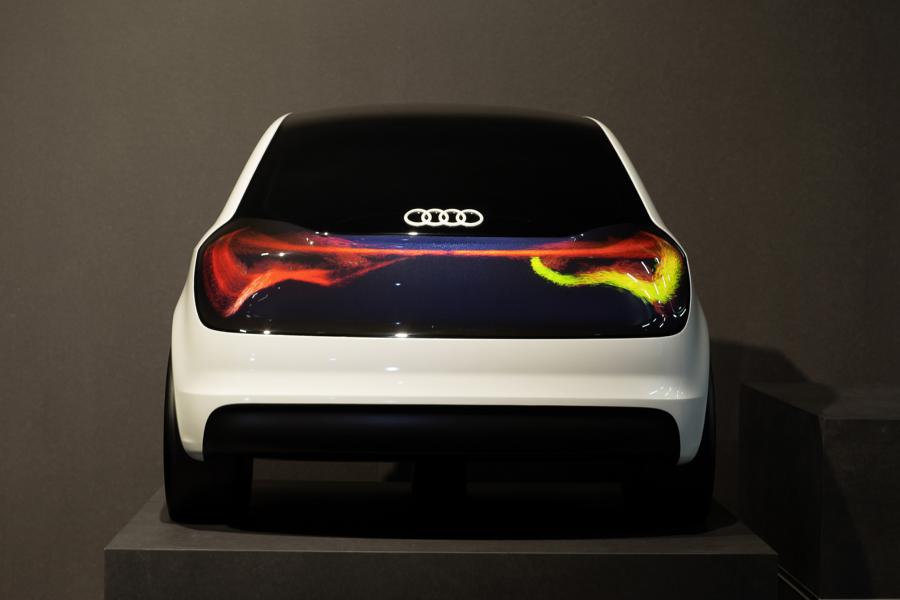
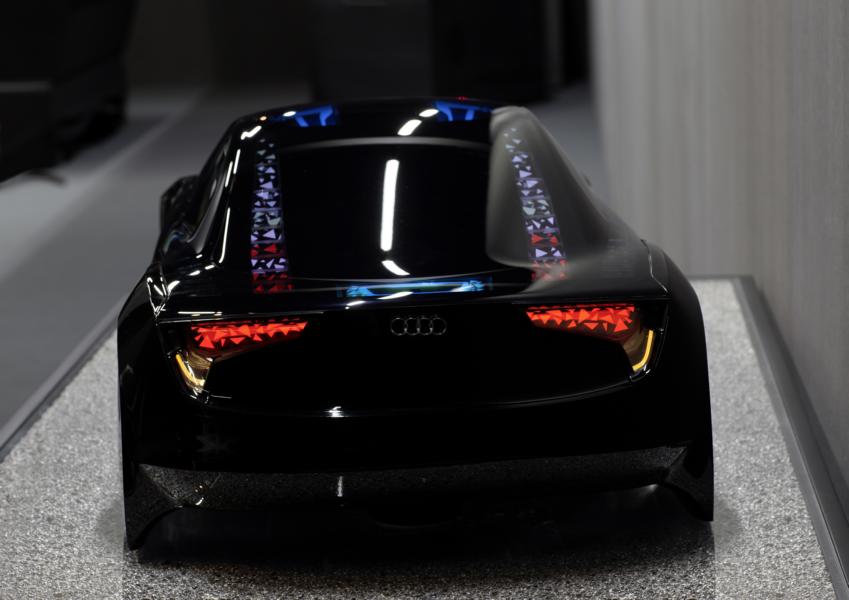
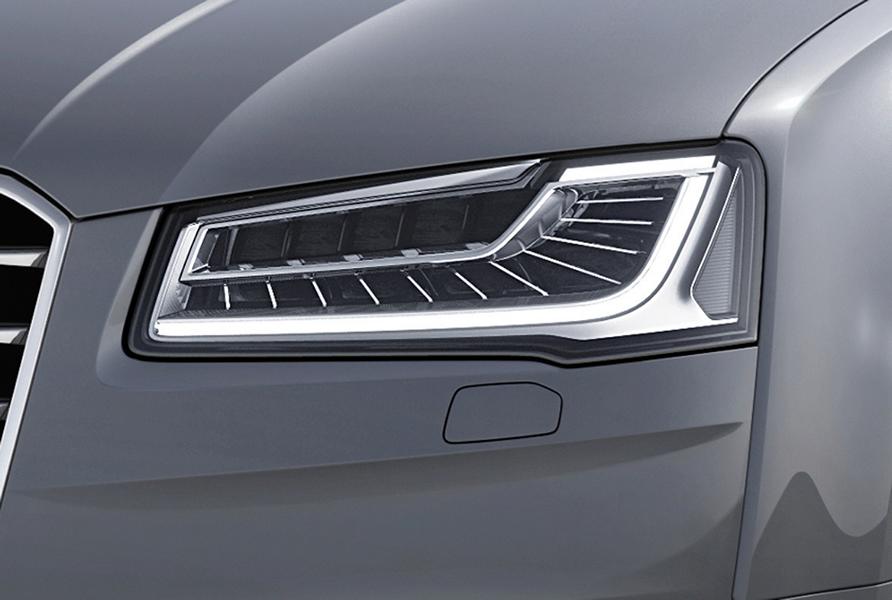
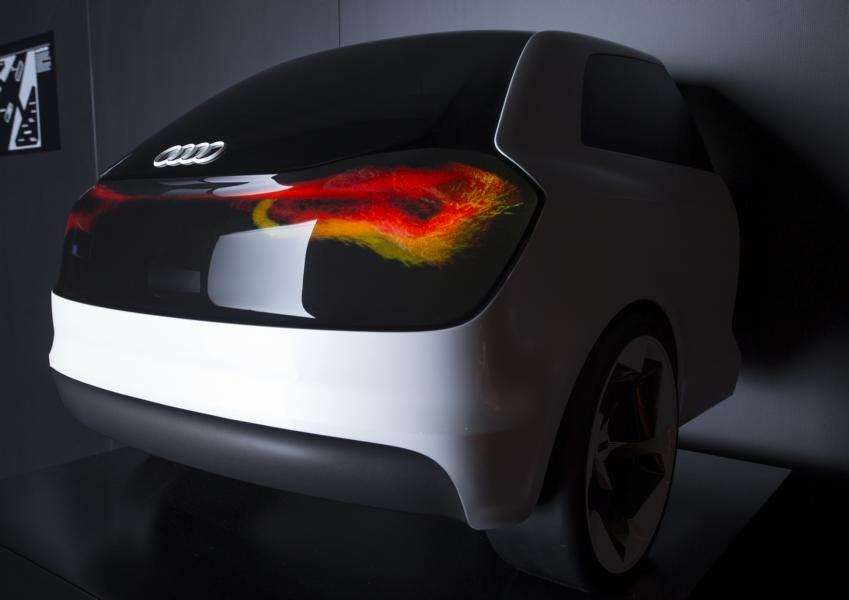


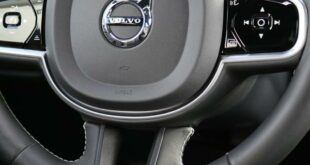





























































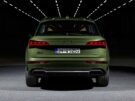
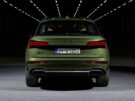
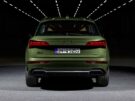
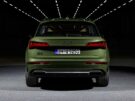
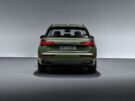
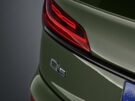














































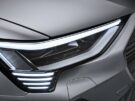
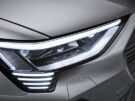
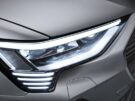
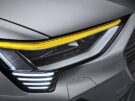
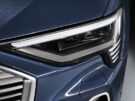
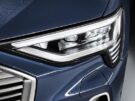












































































































































Thank you for the overview! I would like my Audi to be better adapted to driving at night. It's good to know that there is a laser light from Audi. Since I want to buy a laser module for my car, I hope I don't have to search that long.